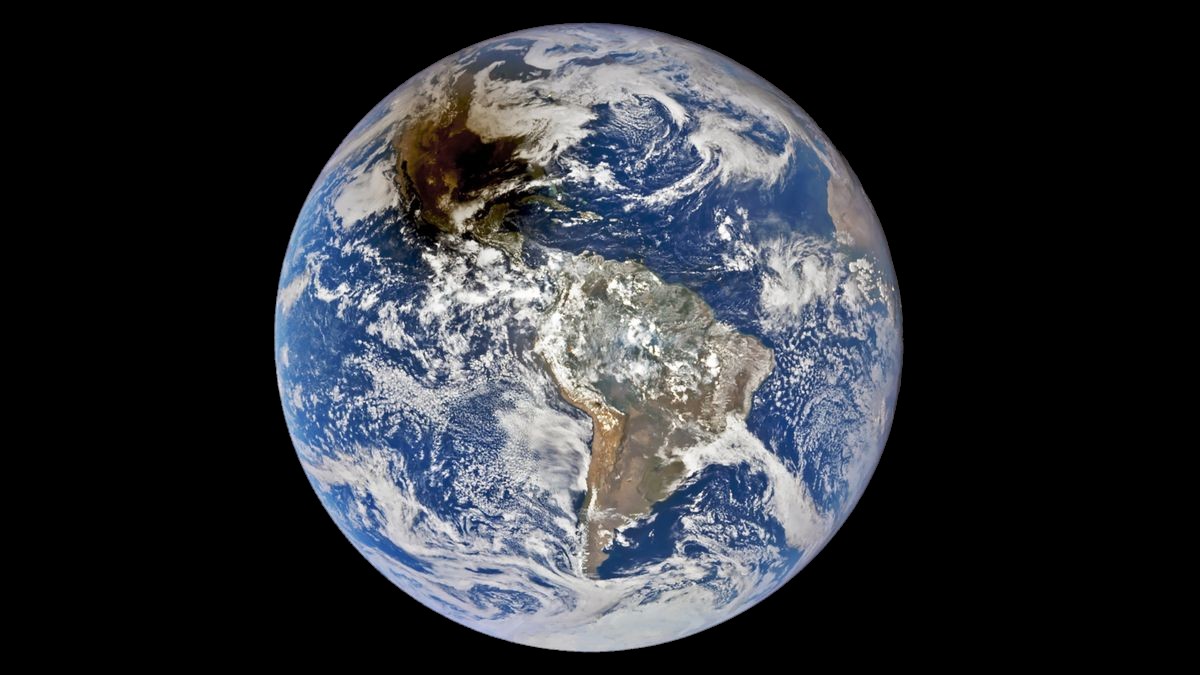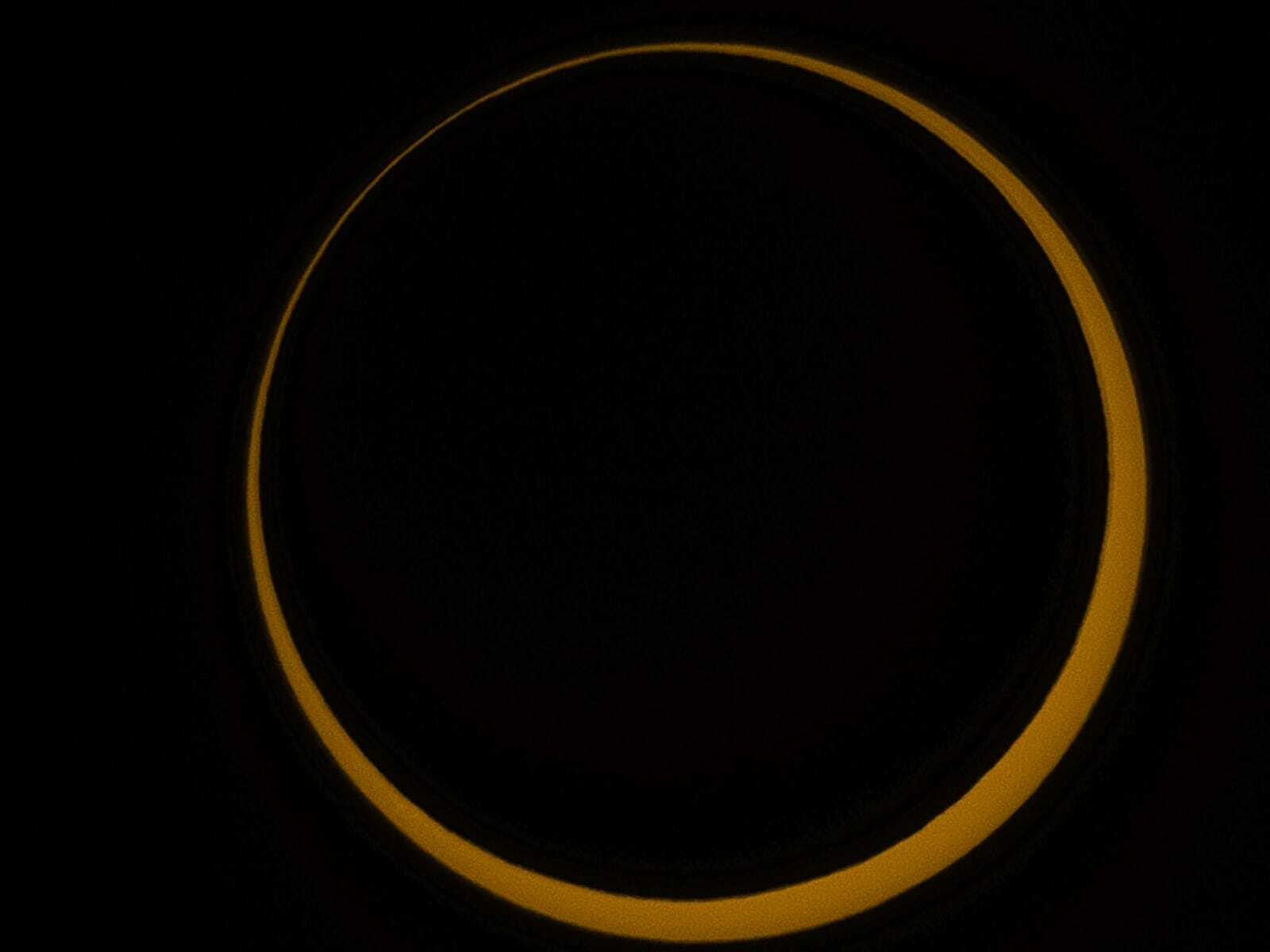
Last weekend's "ring of fire" solar eclipse was spectacular from deep space as well.
The Deep Space Climate Observatory (DSCOVR) satellite snapped an amazing photo of the eclipse, which thrilled millions of skywatchers across the the Americas on Saturday (Oct. 14).
DSCOVR lies nearly 1 million miles (1.6 million kilometers) from Earth, so its perspective is a unique one. The image shows our brilliant blue planet against the blackness of space, its vibrant hues muted in one sizable patch — much of North America — by the moon's dusky shadow.
Related: Annular solar eclipse of 2023 wows skywatchers with spectacular 'ring of fire' (photos, video)

DSCOVR is a joint effort of NASA, the National Oceanic and Atmospheric Administration (NOAA) and the U.S. Air Force. The satellite launched atop a SpaceX Falcon 9 rocket in 2015 to Lagrange Point 1, a gravitationally stable point between Earth and the sun.
DSCOVR's main task involves monitoring the solar wind to improve space weather forecasts. But it also does a fair bit of Earth observation using NASA's EPIC instrument, whose name is short for "Earth Polychromatic Imaging Camera."
We have EPIC to thank for the stunning view of Saturday's eclipse.
Get the Space.com Newsletter
Breaking space news, the latest updates on rocket launches, skywatching events and more!
Solar eclipses occur when the moon passes between Earth and the sun when the trio are properly aligned. That alignment is relatively rare, because the moon's orbit around Earth is tilted by about 5 degrees compared to our planet's path around the sun.
By a cosmic coincidence, the moon and sun are roughly the same size in Earth's sky. So the moon can completely block the sun's disk from our perspective, which results in a total solar eclipse.
But the moon's orbit around Earth is slightly elliptical rather than perfectly circular, with a closest approach point (called perigee) and a farthest point as well (apogee). If the Earth, moon and sun align properly around apogee, the result is an annular or "ring of fire" eclipse, because the moon isn't quite big enough in our sky to cover the sun completely. Instead, a bright ring of light remains around the lunar disk — and that's what those lucky enough to be in the 130-mile-wide (209 kilometers) "path of annularity" saw on Saturday.
DSCOVR wasn't the only spacecraft to record Saturday's eclipse for posterity. A number of Earth-orbiting satellites captured footage from a few hundred miles up, showing the moon's shadow sweep southeast across the contiguous United States.
Join our Space Forums to keep talking space on the latest missions, night sky and more! And if you have a news tip, correction or comment, let us know at: community@space.com.

Michael Wall is a Senior Space Writer with Space.com and joined the team in 2010. He primarily covers exoplanets, spaceflight and military space, but has been known to dabble in the space art beat. His book about the search for alien life, "Out There," was published on Nov. 13, 2018. Before becoming a science writer, Michael worked as a herpetologist and wildlife biologist. He has a Ph.D. in evolutionary biology from the University of Sydney, Australia, a bachelor's degree from the University of Arizona, and a graduate certificate in science writing from the University of California, Santa Cruz. To find out what his latest project is, you can follow Michael on Twitter.









